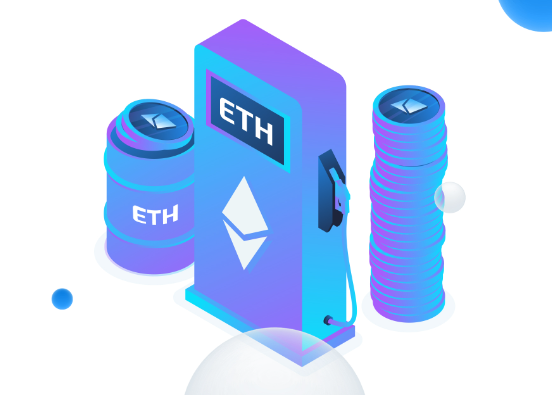As one of the leading blockchain platforms, Ethereum has gained immense popularity for its smart contract functionality and diverse ecosystem of decentralized applications (DApps). However, users engaging with the Ethereum network are often confronted with a critical aspect of the platform: gas fees. In this comprehensive guide, we’ll explore what Ethereum gas fees are, why they exist, and how they impact users within the Ethereum ecosystem.
Understanding Ethereum Gas:
In the context of Ethereum, “gas” refers to the unit that measures the computational effort required to execute operations, such as transactions and smart contracts, on the network. Every operation on the Ethereum blockchain consumes a certain amount of gas, and the total gas used determines the transaction or contract execution cost.
Components of Gas Fees:
Ethereum gas fees consist of two primary components:
1. Gas Price:
- Definition: The price users are willing to pay for each unit of gas.
- Unit: Typically denominated in Gwei, a subunit of Ether (ETH), where 1 Ether = 1,000,000,000 Gwei.
- Dynamic Nature: The gas price is dynamic, influenced by market demand. During periods of high demand, users may need to increase the gas price to have their transactions processed promptly.
2. Gas Limit:
- Definition: The maximum amount of gas a user is willing to consume for a transaction or contract execution.
- Cost Calculation: Gas limit multiplied by the gas price determines the total transaction cost in Ether.
- Safety Feature: The gas limit acts as a safety feature, preventing infinite loops or unintentional high gas consumption. However, setting it too low may result in failed transactions.
Factors Influencing Gas Fees:
Several factors contribute to the variability of Ethereum gas fees:
1. Network Congestion:
- Impact: High demand for Ethereum’s limited block space during peak periods leads to increased gas fees.
- Solution: Users may choose to wait for lower congestion or pay higher fees for faster processing.
2. Gas Price Strategies:
- Strategies: Users can set a specific gas price to outbid others in a competitive environment.
- Tools: Various platforms provide real-time information on gas prices, helping users make informed decisions.
3. Type of Transaction:
- Simple vs. Complex: Simple transactions generally require less gas than complex smart contract interactions.
- DeFi Interactions: Decentralized finance (DeFi) activities often involve more complex interactions, contributing to higher gas fees.
Mitigating Gas Fees:
1. Gas Optimization:
- Smart Contracts: Developers can optimize smart contracts to minimize gas consumption.
- Batch Transactions: Users can batch multiple transactions into a single transaction to save on gas costs.
2. Gas Token Solutions:
- Wrapping ETH: Gas tokens, such as “wrapped ETH” (WETH), allow users to convert Ether into a gas-efficient form during low-demand periods and convert it back during high-demand periods.
3. Layer 2 Solutions:
- Off-Chain Scaling: Layer 2 scaling solutions, like Optimistic Rollups and zk-rollups, aim to process transactions off-chain, reducing the load on the Ethereum mainnet.
The Future: Ethereum 2.0 and EIP-1559:
1. Ethereum 2.0:
- Transition: Ethereum is in the process of transitioning from a proof-of-work (PoW) to a proof-of-stake (PoS) consensus mechanism with Ethereum 2.0.
- Scalability: Ethereum 2.0 aims to address scalability concerns, potentially reducing gas fees.
2. EIP-1559:
- Implementation: Ethereum Improvement Proposal (EIP)-1559, when implemented, will introduce a more predictable fee structure, with a base fee that adjusts dynamically based on network demand.
- Burn Mechanism: EIP-1559 also includes a mechanism to burn a portion of the base fee, potentially reducing the overall supply of Ether.
Conclusion: Navigating the Gas Landscape:
Understanding Ethereum gas fees is crucial for users navigating the platform’s dynamic environment. While gas fees can present challenges, various strategies and upcoming upgrades offer potential solutions. As Ethereum continues to evolve with advancements like Ethereum 2.0 and EIP-1559, users can anticipate improvements in scalability, fee predictability, and overall network efficiency.
As the Ethereum ecosystem adapts to meet the demands of a growing user base, staying informed about gas dynamics, exploring optimization techniques, and leveraging emerging solutions will empower users to make more efficient and cost-effective transactions within the Ethereum network.




